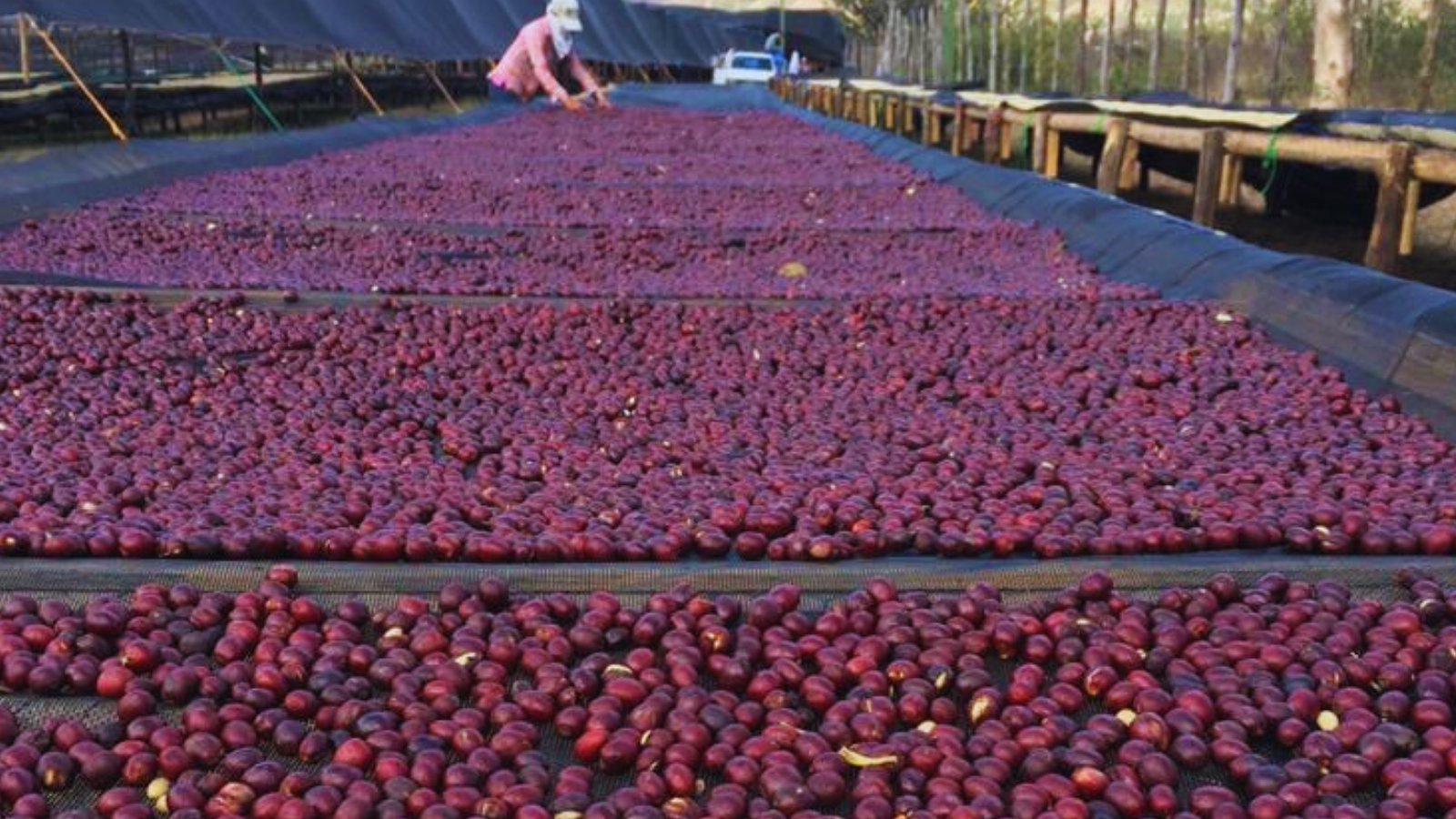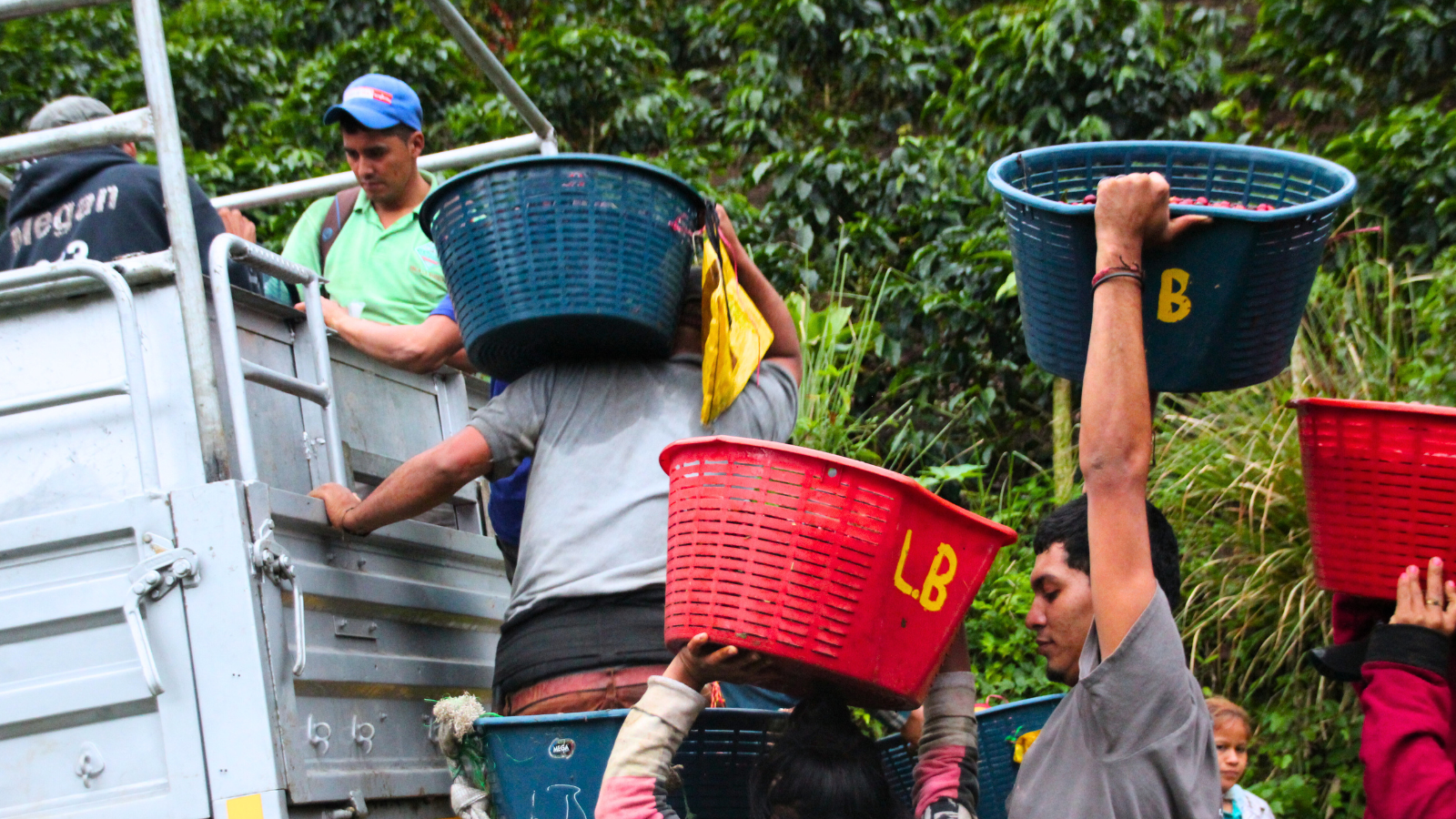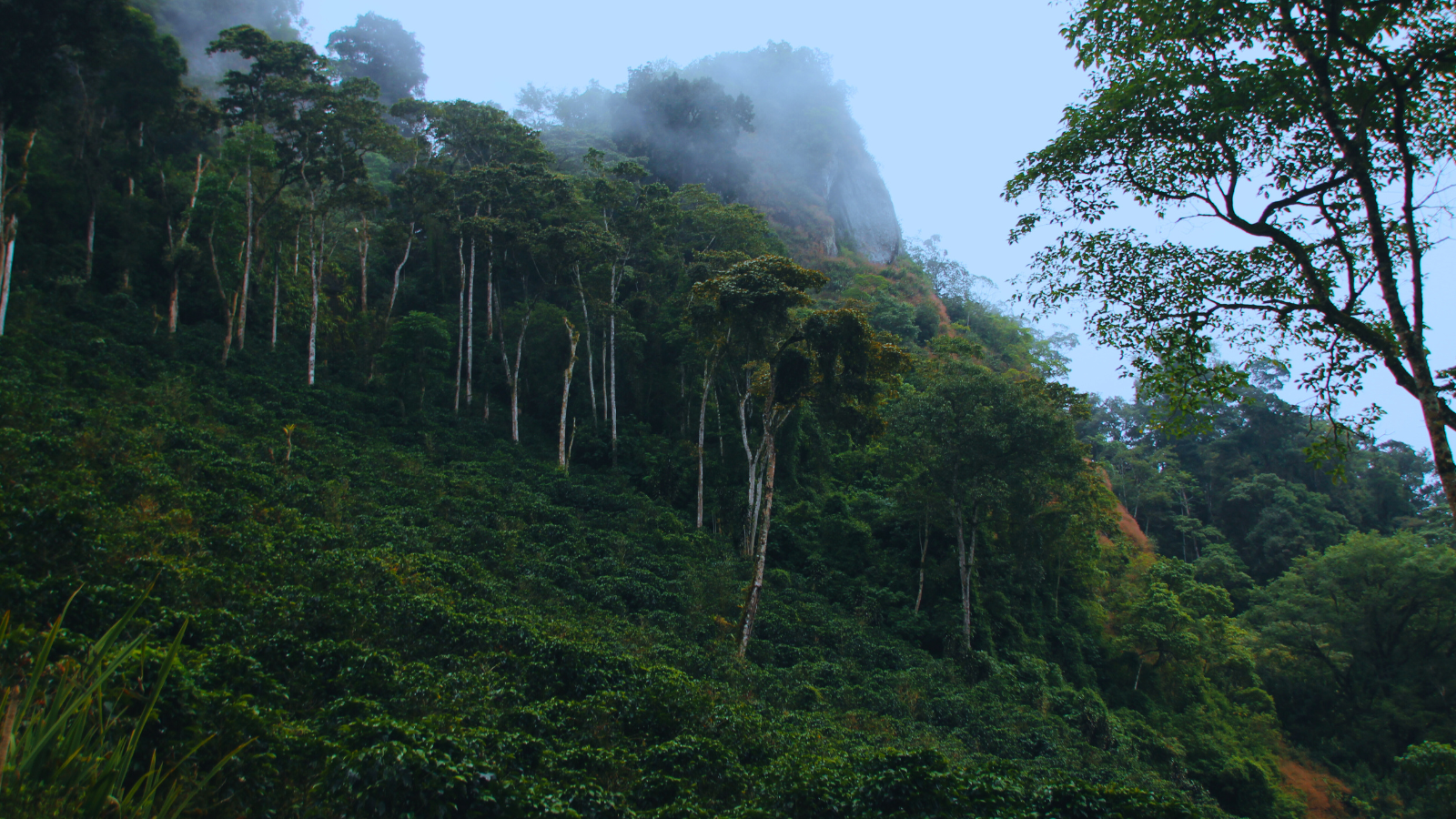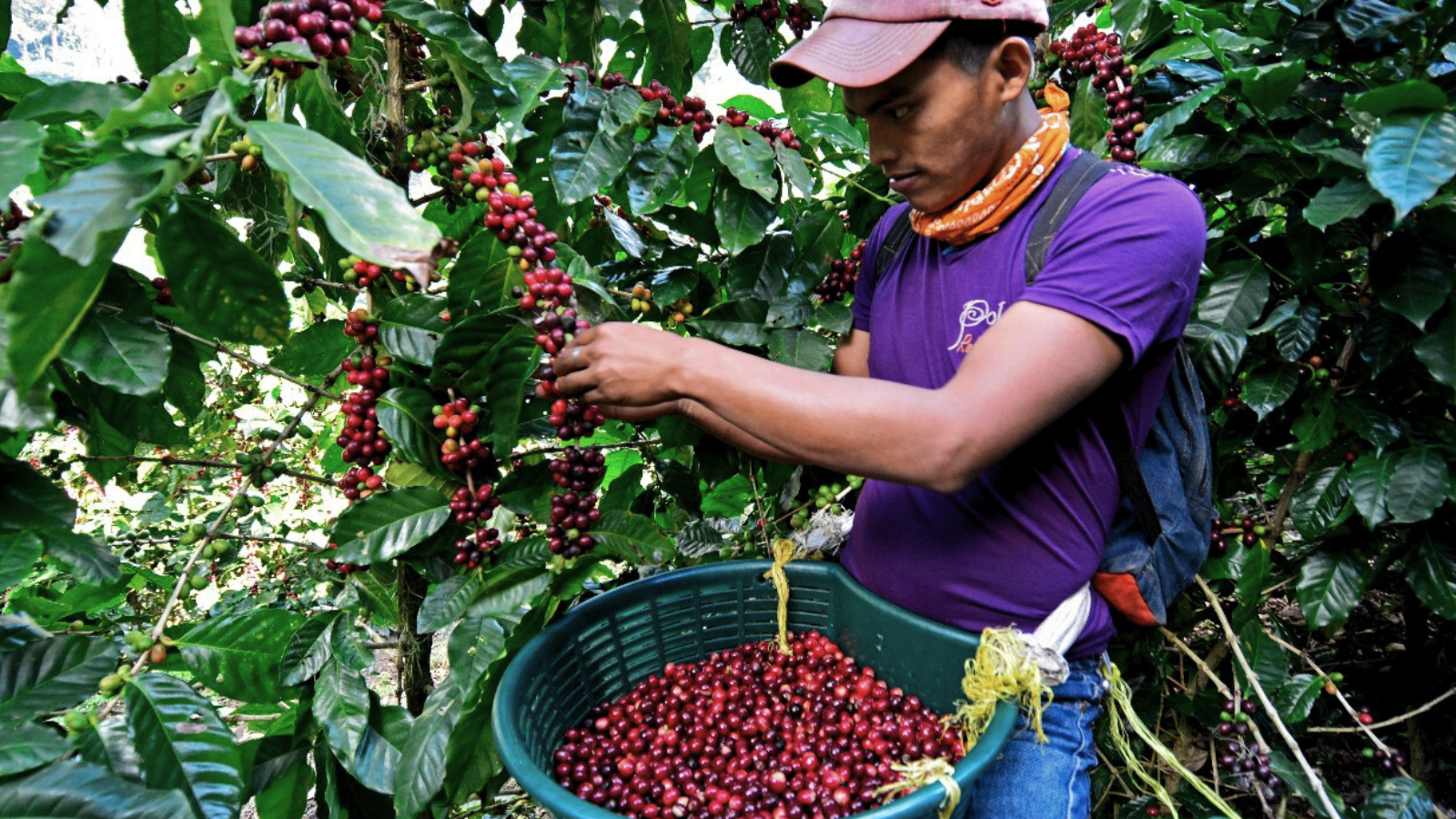Nicaragua pulses as the largest country in the heart of Central America. Here, coffee continues to surpass all expectations, despite the political unrest, natural disasters, and warfare that hinder progress. Geographical advantages, innovation, and the remarkable resilience of enterprising producers are putting Nicaragua back on the map for its potential as a specialty-coffee country. Genuine Origin is excited to be part of the new wave of Nicaraguan coffee excellence.

Coffee cherries drying on raised beds in Nicaragua
Nicaragua Coffee History
To understand Nicaraguan coffee, you have to start with Nicaragua’s turbulent political history. Large-scale coffee cultivation began in the mid-1800s. By 1900, coffee production grew to 150,000 bags, but the coffee trade was disrupted by political unrest, revolutions and hurricanes from the 1960s to 1990s.
Today over 71% of coffee farmers in Nicaragua are smallholders with less than 15 hectares under coffee. Medium-sized farms between 15-70 hectares comprise 22%, and the remaining minority are large-scale estate holders. Total national coffee production volume is roughly divided into thirds among small, medium, and large-sized farms, according to the USDA.
While the country recovered under the new post-war government from 1990 to 2006, producers were plagued by low coffee prices. Dwindling profits allowed little room for smallholders to make a living, much less invest in their ravaged farms. Debt accumulated until three of the six national banks collapsed, and workers had their pay withheld by banks and plantation owners.
According to the USDA, an estimated 200,000 people – around 4% of the population – left the country in 2022 to escape deteriorating conditions. While coffee producers have reported minimal impact on the supply of labor during the 2022/2023 harvest, there is a rising concern over workforce shortages.
Nicaragua Coffee Production
Despite its many challenges, Nicaragua consistently produces large volumes of high-quality coffee. The coffee supply chain employs over 330,000 people, and seasonal harvest work is a crucial source of income for the rural population. Nicaragua is the 12th largest producer in the world, and 98% of its output is Arabica coffee.
Small coffee farms with less than 3 hectares under coffee make up half of Nicaragua’s farms. For these smallholders, years of low C-Market prices have taken a toll. It’s been difficult for them to invest in the short-term and long-term stability of their farms.
The agricultural financial system is underdeveloped. Farmers continue to pay off debts accumulated over the years leaving many financially strapped. Simply put, many smallholders just don’t have the money to rebuild their farms.
The USDA projects a harvest of 2.62 million bags (including Robusta) for the 2023/2024 harvest, a slight decrease. The cost of fertilizer went up ~60% in Nicaragua due to the compounded effects of the pandemic, supply chain disruption, and the Russian invasion of Ukraine. Despite ample rainfall and planting high-yielding varietals, years of sub-optimal fertilization are showing in the declining production volume of Arabica coffee. Furthermore, the return El Niño in 2023 could also hamper production.

Nicaraguan coffee pickers delivering ripe red cherries to be transported to the wet mill
Common Nicaraguan Coffee Varietals
Caturra is the most common Nicaraguan coffee variety, making up over 70% of Arabica-growing areas. However, Typica, Bourbon, Maragogype, and Pacas varieties are also widespread in Nicaragua.
Many farmers are also looking for rust-resistant varieties. Marsellesa, Parainema, Costa Rica 95, IH Café 90, and Lempira, among others are gaining traction. World Coffee Research (WCR) is working closely with Promecafe and the Nicaraguan Institute of Agricultural Technology (INTA) to improve coffee breeding and agronomic research in Nicaragua to impact economic transformation.
Nicaragua Green Coffee Producing Regions
Coffee production in Nicaragua is centralized, with 85% of the Arabica coffee plantations in three main northern regions: Jinotega, Matagalpa, and Nueva Segovia. Robusta production, on the other hand, is concentrated along the Southern Caribbean Coast, and growing areas are slowly expanding to accommodate more Robusta production.
Jinotega’s volcanic soil and tropical climate produces consistently high-quality coffee. Altitudes range from 1,000 to 1,700masl, and the region is often referred to as “La Ciudad de las Brumas” or City of the Mists due to the fog that cloaks the mountain ranges. Coffee cultivation in Jinotega began in the mid-19th century, and farmers here usually employ the washed method for green coffee processing. Coffee from Jinotega is known for its well-balanced and approachable flavor profile, with chocolate and nut-forward flavors and undertones of fruit and citrus.
Matagalpa lies in the north-central highlands, at altitudes ranging from 800 to 1,500masl. Many farms here are small. They rely primarily on washed processing but have begun experimenting with more innovative methods to process their coffee. The land is rich with volcanic soil, and the high altitude lends bright and vibrant acidity to the flavor profile of coffee from Matagalpa.
Nueva Segovia sets itself apart from Matagalpa and Jinotega. Its coffees offer floral notes that have won many Cup of Excellence awards. Nueva Segovia is home to some of the highest altitudes in Nicaragua, from 1,200 to 1,800masl, and truly exceptional coffee can be found throughout these acclaimed slopes.

Finca La Bastilla coffee fields in Jinotega, Nicaragua
Nicaraguan Coffee Quality
Like other Central American origins such as Costa Rica or Guatemala, Nicaragua also grades green coffee according to the altitudes in which the coffee was grown. A Strictly High Grown (SHG) coffee is grown at an altitude of 1,200 meters above sea level or higher. When coffee cherries grow at high altitudes, they tend to mature more slowly. This allows the fruit to take in more nutrients, resulting in denser, sweeter green coffee beans that are considered higher quality. Due to the longer maturation, harvesting SHG coffees generally occurs later in the season.
What does Nicaraguan coffee taste like?
Coffee from Nicaragua is often associated with bright, citric acidity, chocolaty and nutty flavors, and a smooth body. However, one can find a wide range of flavor in Nicaraguan coffee. Different microclimates and increased experimentation in processing are making Nicaraguan coffee a playground of nuance and flavors.

Nicaraguan coffee picker selecting ripe red coffee cherries during harvest
Genuine Origin in Nicaragua
With every harvest, Genuine Origin looks forward to the new and exciting green coffees on offer from Nicaragua. Our long-term partner, La Bastilla Coffee Estates is constantly dazzling us with surprises like this Yeast Fermentation 2023 microlot.
La Bastilla produces up to 150 microlots a season. The estate is made up of two farms – La Bastilla at 1,050-1,450masl in Jinotega and Santa Luz at 700-900masl in Matagalpa. La Bastilla Coffee Estates is vertically integrated: they produce and harvest the coffee; provide processing and dry milling; and prepare their coffee for export on-site at the farm level. With its own micro-mill and a new static dryer dedicated to processing these microlots more efficiently, La Bastilla can produce never-ending possibilities and explore the full potential of Nicaragua specialty coffee.
Another roastery essential is the Jinotega Marimba SHG/EP lot, named for Nicaragua’s national instrument, which brings together the distinctive characteristics of the Jinotega region.
A diverse mix of new Nicaragua green coffees arrived at Genuine Origin’s warehouses recently. The 2023 crop includes honey, natural, washed, anaerobic, and yeast fermentation lots. And they’re selling out fast!
Check out our full Nicaragua green coffee collection line up on our website: https://www.genuineorigin.com/nicaragua






